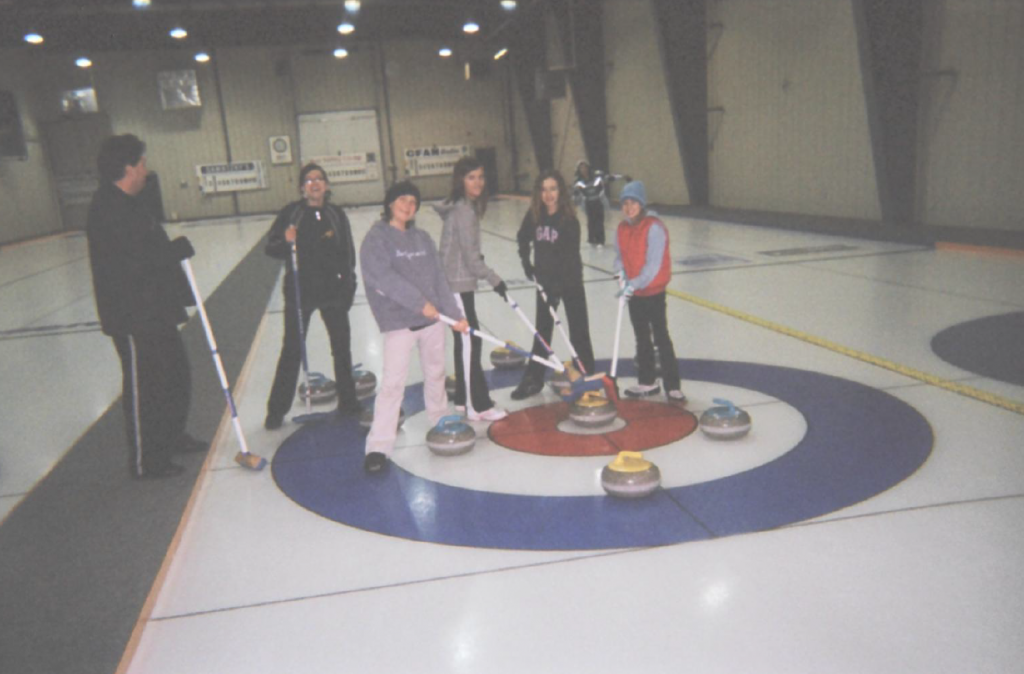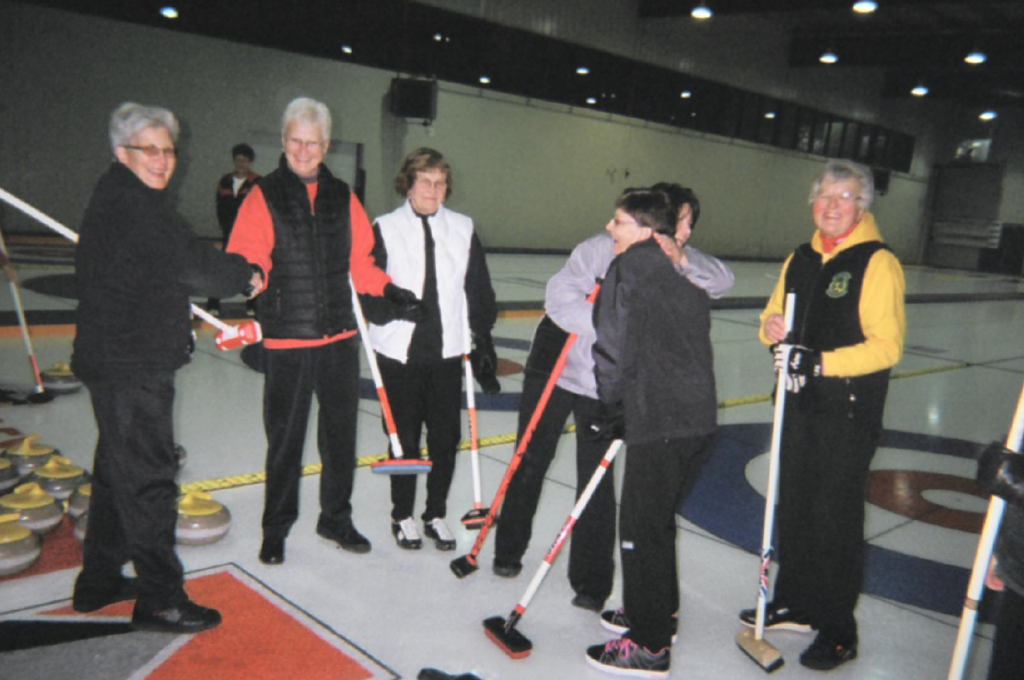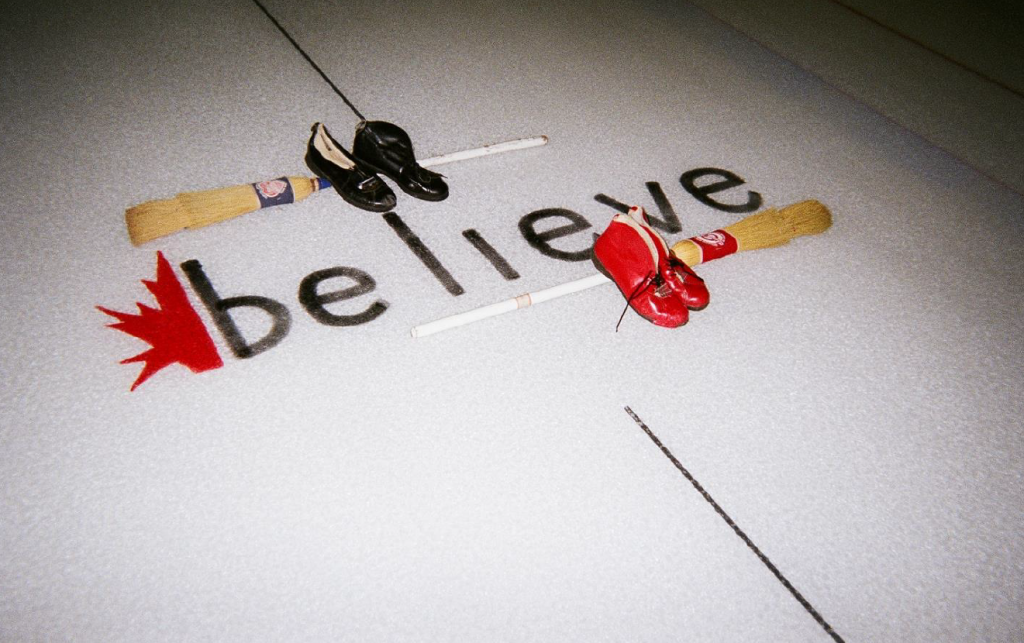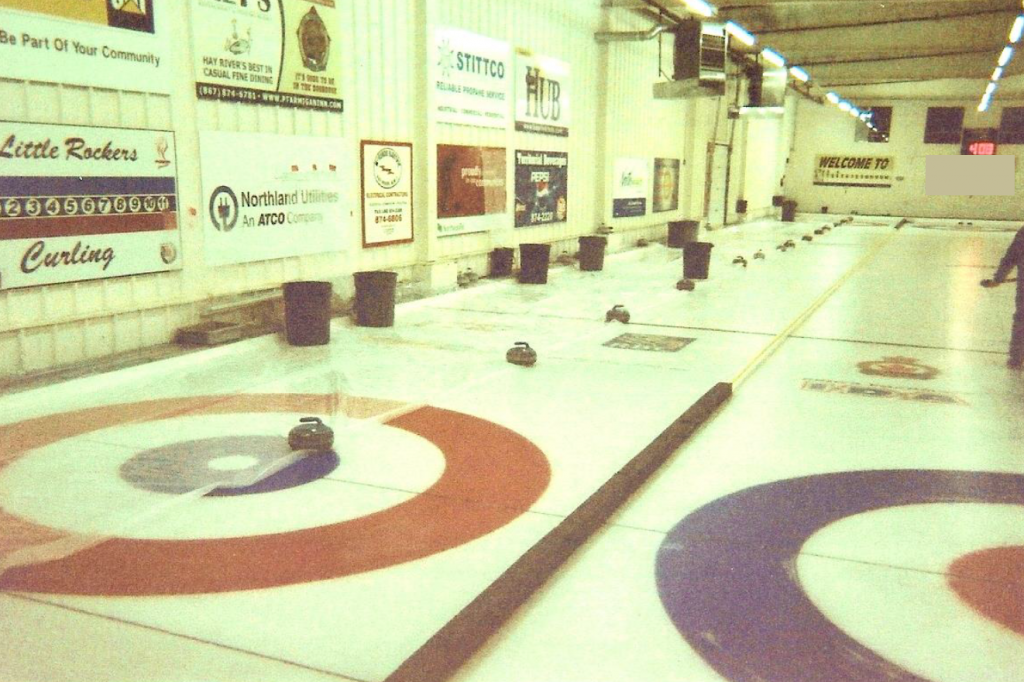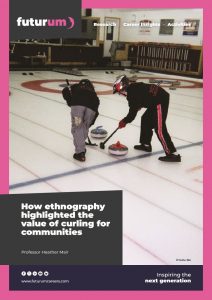
How ethnography highlighted the value of curling for communities
[[{“value”:”
How ethnography highlighted the value of curling for communities
The sport of curling provides more than just exercise for its players. Growing up in rural Canada, Professor Heather Mair witnessed the importance of curling in the social life of her community. Now a recreation and leisure researcher at the University of Waterloo, she has conducted ethnographic studies to investigate the social role of curling clubs and explore the impact of curling on well-being. Heather is also leading a partnership dedicated to making the sport more accessible to everyone.
Talk like a recreation and leisure researcher
Ethnography — a qualitative research method of prolonged observation, often involving the researcher immersing themselves in a community to understand cultures, habits and experiences
Photovoice — a participatory research method in which people take photos relating to their own lives and then use them to share their perspectives and experiences with others
Social capital — social value created by the relationships, networks and shared understandings within a group of people that provides benefits to individuals and the group as a whole
Third place — a social place that is not home (the ‘first place’) or work/school (the ‘second place’)
Professor Heather Mair, a recreation and leisure researcher at the University of Waterloo, had only curled a few times before she decided to dedicate her career to studying the sport. “My mum curled a little when I was young, so curling was in my life, but I hadn’t had many chances to try the sport myself,” she says.
Curling originated on frozen ponds in Scotland during the 16th century, when members of the community would come together during the harsh winters. It has since evolved into a highly technical sport, typically played by teams of four who slide granite stones across a sheet of ice, using brooms to guide them. The aim is to get your team’s stones as close as possible to a target area, while knocking the other team’s stones out of the way.
Heather is not studying the sport itself, but the social role it plays in communities. “Growing up in a rural village, I had a sense that the curling club was a really social place for the community,” she explains. “Curling is a team sport, so it’s social in that way. But it also has all these wonderful social traditions off the ice. After a match, most teams sit in the club and have a drink with their opponents. During competitions, many clubs host big community meals.”
Immersion through ethnography
Heather takes an ethnographic approach to her research. “Ethnography is about understanding a culture, and to do this, you need to be immersed in it,” she explains. For one study, Heather spent five years travelling around Canada visiting rural curling clubs. “I wanted to illustrate just how valuable curling clubs are as social spaces,” she says. “As an ethnographer, I had to go into curling clubs and take part in those social activities, then observe and record what was happening.” She also interviewed club members about the role that the curling club played in their lives and communities.
For another project, Heather and her research team gave cameras to women curlers in rural areas and asked them to take photos showing the role that curling played in their health and well-being. In addition to photos of people curling, many women took pictures of the social aspect of the sport, showing people sitting in the club and laughing. “This photovoice project allowed women to convey what curling meant to them in unique ways,” says Heather. “It also allowed us to use those photos to convey the value of curling to the outside world. Photovoice is a powerful way to share the impact of the sport.”
Heather’s studies have shown how curling clubs are far more than just sport environments – they are gathering places and community hubs. For instance, many rural curling clubs can function as the local bar, where people meet to socialise and drink, and the off-ice areas are often hired out for community events such as weddings. “Curling clubs are what we call ‘third places’ – places that are neither home nor work/school,” explains Heather. “They help us build social capital by forming relationships with people outside our circle of family and colleagues, which is so valuable to individual and community health and well-being.”
Curling for everyone
In recent years, the issues of diversity, equity and inclusion have been brought into sharp focus and many organisations, including Curling Canada (the national governing body for curling in Canada), are assessing how they can ensure they are welcoming to everyone. Together with her colleagues Laura Leitch, Dr Simon Barrick and Dr Kristi Allain, Heather is helping to lead this initiative through Partners Transforming Curling. This partnership with Curling Canada, regional curling associations and local curling clubs is an opportunity for stakeholders at all levels of the sport to have conversations about how to make curling more diverse, equitable and inclusive.
“One magical thing about curling is that it’s always adapted to address its members’ needs,” says Heather. For example, if people struggle to crouch down on the ice to slide the stones, they have the option of using a stick to push the stones while standing or sitting. “I wanted to learn from these adaptations that make curling accessible to people with physical disabilities,” says Heather. “How can we adapt curling clubs to make them accessible for everyone?”
Curling clubs across Canada have been introducing initiatives to make curling more welcoming to all. “For example, there’s a wonderful programme called ‘Out on Ice’ where curling can be a safe space for LGBTQ2+ people, whether or not they were originally curlers,” says Heather. She and her team are evaluating initiatives like these using interviews, observations and focus groups to see how effective they are at making people feel welcome. From the results, Partners Transforming Curling will distribute information about ‘What makes a welcoming curling club?’ to clubs and curlers across Canada.
“We want to get everyone having conversations about diversity, equity and inclusion in curling,” says Heather. “We want all curlers to think about what messages their clubs are sending to potential new members. If a new person walked into the club, would they immediately feel that they belong in curling?”
Reference
https://doi.org/10.33424/FUTURUM643
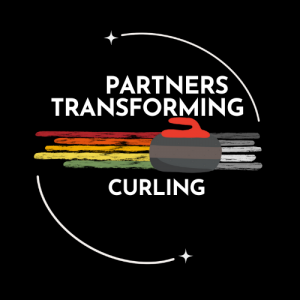
![]()
Heather has shown the vital role that curling plays in communities and she is now ensuring that everyone can benefit from its social value. But has this research turned Heather into a curler herself? “I’ve learnt to curl over the years as part of my research,” she says. “I do love to curl, but I have no balance – I’m terrible!”
 Professor Heather Mair
Professor Heather Mair
Department of Recreation and Leisure Studies, University of Waterloo, Canada
Fields of research: Recreation and leisure, community sport
Research project: Investigating the social role of curling in rural Canada and increasing the accessibility of the sport
Funders: Social Sciences and Humanities Research Council of Canada (SSHRC); Curling Canada
About recreation and leisure studies
Recreation and leisure studies is an interdisciplinary field that combines aspects of social sciences, health studies and business studies to explore the links between activities, physical and mental well-being, society and the economy. Recreation and leisure researchers are interested in how people spend their time. They investigate what these activities mean to individuals and communities, how they benefit from them and what barriers people might face to participation. Researchers are increasingly interested in how leisure activities prevent illness and improve mental well-being, especially in terms of addressing social isolation.
Researchers use a range of methods for their work, including interviews, surveys, focus groups and observations. Some, like Heather, use ethnography and photovoice approaches. Others might use data recorded by wearable devices to study patterns of activity and physiological responses, or social media to understand trends.
The importance of leisure
“Sport and leisure activities fulfil all three aspects of health and well-being: physical, mental and social,” says Heather. “They help you stay active, build relationships, relieve stress and feel connected in your community. Being physically active with other people is probably the best thing you can do for all levels of your health!” This means it is important that everyone has the opportunity to participate in sports. And it is important to know that sport is for everyone, regardless of ability.
Heather is passionate that we all make leisure activities (whether sport-related or not) a priority in our life. “Leisure shouldn’t be an afterthought, something that we only do if we can fit it in,” she says. “It is very important to make time for leisure activities as they are so important for mental health and well-being.”
Pathway from school to recreation and leisure studies
Heather believes it is important to study what you enjoy, and any subject can lead into recreation and leisure studies. “A lot of students haven’t heard of recreation and leisure studies when they stumble across our classes,” she says. “They come from all backgrounds – arts, engineering, healthcare, sciences – and discover that they can have an exciting career in recreation and leisure.”
Studying social science subjects will help you develop research skills, including ethnographic methods, survey design, data collection and analysis, and how to write research reports.
“Look for leadership courses,” advises Heather. This could be through coaching a youth sports team or volunteering with a local sports club. Volunteering in community organisations or working part-time in your local leisure centre will build valuable leadership and people skills.
Look for opportunities to take part in research studies. Participate in surveys and focus groups about sports you are interested in or contact university researchers and ask to help them with their research projects.
Explore careers in recreation and leisure studies
“If you have a passion for sport, you could carve out an exciting career related to it,” promises Heather. “As well as academic research studying leisure activities, you could work in a local sports club, for a national sports association, or as a swimming teacher at the local recreation centre. There’s a whole range of careers that are rich and rewarding.”
“The great thing about recreation and leisure studies is that you can build a career around making people healthier and incorporate your own interests into this,” says Heather. “I enjoy seeing people realise that sports and activities they love can become a powerful force in their life.”
Learn more about the research being carried out by Heather and her colleagues in the Department of Recreation and Leisure Studies at the University of Waterloo: uwaterloo.ca/recreation-and-leisure-studies/research/centres-groups
Meet Heather

I grew up in a small village where we all played sports all the time. As a teenager, I was part of everything I could be part of – sports, community events, student activities, music groups. I think I just loved being involved – I was a joiner!
I have degrees in political science, political economy and rural development. I never knew about recreation and leisure as a field of study when I was younger – it took me a long time to get here! I started out studying rural tourism because I was curious about how it creates rural development. I’ve always been critical of a community basing its entire economic development on tourism, which is often the case in rural Canada when resource-based economies become difficult for financial or environmental reasons.
I was always interested in the theoretical side of community well-being and development. But then my PhD advisor got me involved in projects where I was out working in the community – facilitating, collaborating, doing active research. Once I saw the complexity of communities and the passion of community members, I couldn’t go back to just theoretical studies! And so I started to consider what it was that I was really interested in, and I realised I was fascinated by the social aspect of curling clubs.
I’m obsessed with watching curling competitions on TV. Sadly, my husband and daughter couldn’t care less about the sport! They tease me about always wanting to watch curling. Fortunately, I can say it’s for my work, so they have to let me watch it!
When I’m not watching curling, I enjoy being outside – taking the dog on long walks and birdwatching. Dog walking is another fascinating area of research – I’d love to study the networks formed between dog walkers in the park!
Heather’s top tip
Do what you love. Think about what really fires you up and imagine how it could be a bigger part of your life. Contemplate how your passion could become a path forward for you.
Do you have a question for Heather?
Write it in the comments box below and they will get back to you. (Remember, researchers are very busy people, so you may have to wait a few days.)

Discover how a human rights lawyer is ensuring everyone has access to school sports:
futurumcareers.com/using-law-and-data-to-address-gender-inequality-in-school-sports
The post How ethnography highlighted the value of curling for communities appeared first on Futurum.
“}]]




